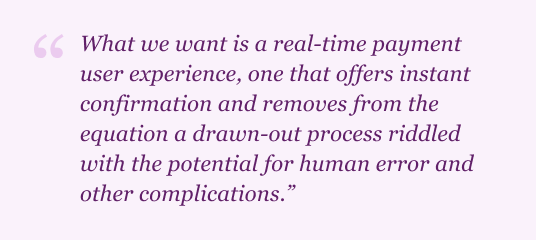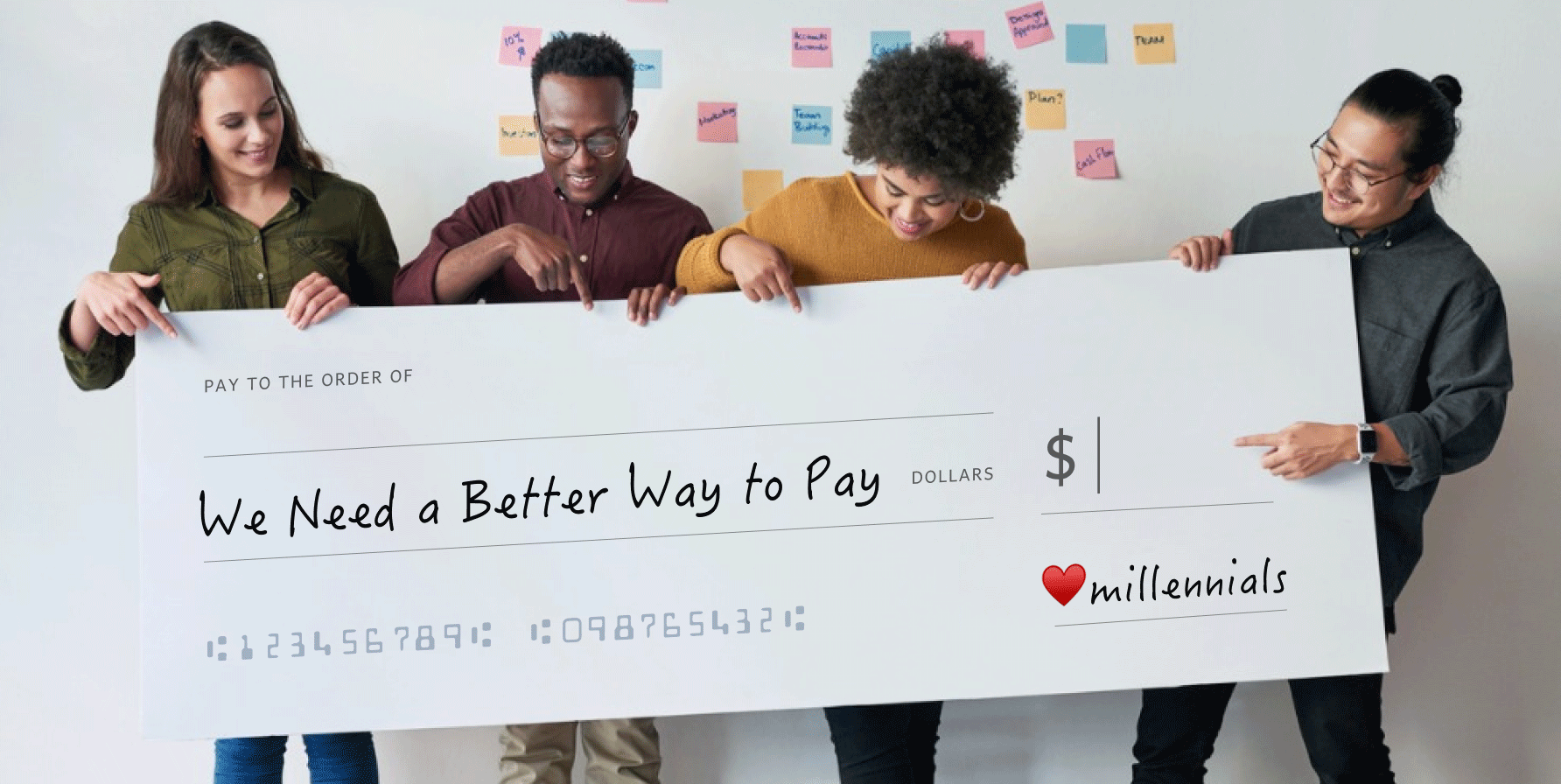Speaking on behalf of the 72.1 million millennials in the United States, we don’t write checks. We just don’t. Unless, that is, we have to.
But believe it or not, in the year 2020 there are still certain scenarios where sending a check is the most convenient (okay, the only) way to pay. Often, we run into this challenge because the last time the merchant updated their business technology was to buy a fax machine.
My wife and I have encountered this dilemma while trying to pay small businesses like carpet cleaners or tree trimmers. Here’s what happens: The business owner sends us a handwritten invoice in the mail with instructions on where to send the check. There’s no email available, no website option, no other way to pay — other than to put your paper check in an envelope, attach a stamp, and snail mail it.

Then the fun really gets started. You’ve got to wait for the check to clear, which might happen next week, next month, or even months later (by which time you’ve forgotten you ever sent a check). This, of course, is if you can even find your checkbook in the first place. We write checks so infrequently that the address on them is for the house we lived in back in 2013. We’ve moved twice since then.
Speaking of address, that highlights another drawback about paper checks: They offer easy access to information we’d rather not share, most specifically our bank account number. I mean, if a carpet cleaner asked you to write down your bank’s routing and account numbers on a regular piece of paper so they could make a direct withdrawal you’d probably tell them they were nuts, right? A paper check is like a self-inflicted micro data breach.
Online bank bill pay: Bridging the gap
So, what’s a millennial to do in this situation?
Personally, my wife and I turn to our bank’s online bill pay solution. For some reason, banks are willing to handle all this check writing nonsense for us — at no charge. All we have to do is log in and tell them where to send the payment. They’ll cut the check, pay the postage, mail it, and wait for the check to clear. Meanwhile, the payment has been pulled out of our account and the bank has sent a check drawn on a bank-managed clearing account. Our financial information is kept private and our balance remains current.

And…done! We sit back and enjoy a much easier digital experience while our bank is left to deal with the tedious details of delivering a paper payment per the merchant’s antiquated business processes.
Over the years there have been other situations where our bank’s online bill pay solution has bridged a technology gap for us. For example, at one point, my parents offered us a personal loan to buy a used car. We then set up monthly recurring payments through online bill pay to automate the payoff journey. My parents received a check from our bank every month until the loan was paid in full.
As boomers, my parents just weren’t interested in trying any new-fangled, person-to-person payment platforms like Venmo or Zelle; they preferred to receive a check because that fit their financial management paradigm. As millennials, my wife and I weren’t interested in writing a check for all the aforementioned reasons. Once again, our bank’s online bill pay solution helped us cross that divide.
A bill pay system that’s still decades behind
At this point, I’ve praised my bank’s online bill pay solution so much you might think my wife and I pay all our bills this way.
#Nope.
All of our other bills (cell phone, electrical, water, natural gas, gym membership, streaming video, streaming music, car insurance, etc.) are paid directly through the providers’ websites. And why not? These merchants are offering instant ways to pay. Yeah, it’s a hassle to manage all those different payment portals, especially when the card on file expires or needs updating.

And yes, it would be nice to manage and pay all of our bills in one place, specifically our online banking portal, where we already manage all our money. So, the question remains, why don’t we?
The truth is, we’d love to.
Unfortunately, today’s bill pay system wasn’t designed for the financial and user experience needs of millennials. It was designed for our parents and the check writing needs they had in the 1990’s. Shockingly, not a lot has changed in two decades to meet the modern demands of consumers.
Most banks’ online bill pay solutions were built to simply digitize the check writing experience. But that’s not good enough for a younger generation of bill payers (who I might have already mentioned are not fond of checks). Admittedly, there are still some businesses that lag behind the curve (like our friend the carpet cleaner) and some people who still prefer to write checks (like that lady holding up the grocery checkout line), but the tides of faster payment preference are changing quickly.

More and more online banking users (both millennials and other early adopters) are no longer writing checks, so they aren’t interested in a bill pay solution designed to digitize check writing. What they want — what we want — is a real-time payment user experience, one that offers instant confirmation and removes from the equation a drawn-out process riddled with the potential for human error and other complications.
In a nutshell, we’d love to manage our bills and subscriptions in the same place we manage our money. But if financial institutions want us to use their online bill pay, they need to take it to the next level with a solution that the improves speed, efficiency, and security of the process for consumers.
Consumers deserve a better way to pay bills
Good news and full disclosure: I might have an inside line on everything above.
As a solutions engineer at BillGO, I can tell you that relentlessly advancing faster, easier, and safer bill payments is the driving force behind everything we build. We’re serious about making the bill-payment process more intelligent. So, we created a payments engine that pays bills in real time — all while maintaining the highest security standards. With this payments engine, we’re empowering financial institutions to reimagine online bill pay as a solution relevant to millennials (and forward thinkers of every generation).

The key to transforming the user experience is to make the real-time payment capability the central focus of the entire solution. With BillGO’s payments engine and robust biller network, users can easily centralize all of their bill management and payments. Best of all, they’re able to make real-time payments, receive real-time credit, and get a real confirmation number.
So, heads up banks: Today’s consumers want — and deserve — a better way to pay their bills. Delivering a modern bill pay solution that revolves around real-time payments will help your brand resonate with tens of millions of existing and potential customers who are actively looking for the option to pay where they want, when they want, and how they want. The ball’s in your court.

Nolan Brown is a Solutions Engineer at BillGO, where he inspires and empowers financial institutions to innovate past what exists. With more than 15 years of experience in digital banking and Fintech, he is passionate about encouraging personal and organizational transformation and growth. In his spare time, Nolan likes to go on adventures with his wife and three boys, dig into the mysteries of life, and enjoy a craft brew by the campfire. Connect with Nolan on LinkedIn.

